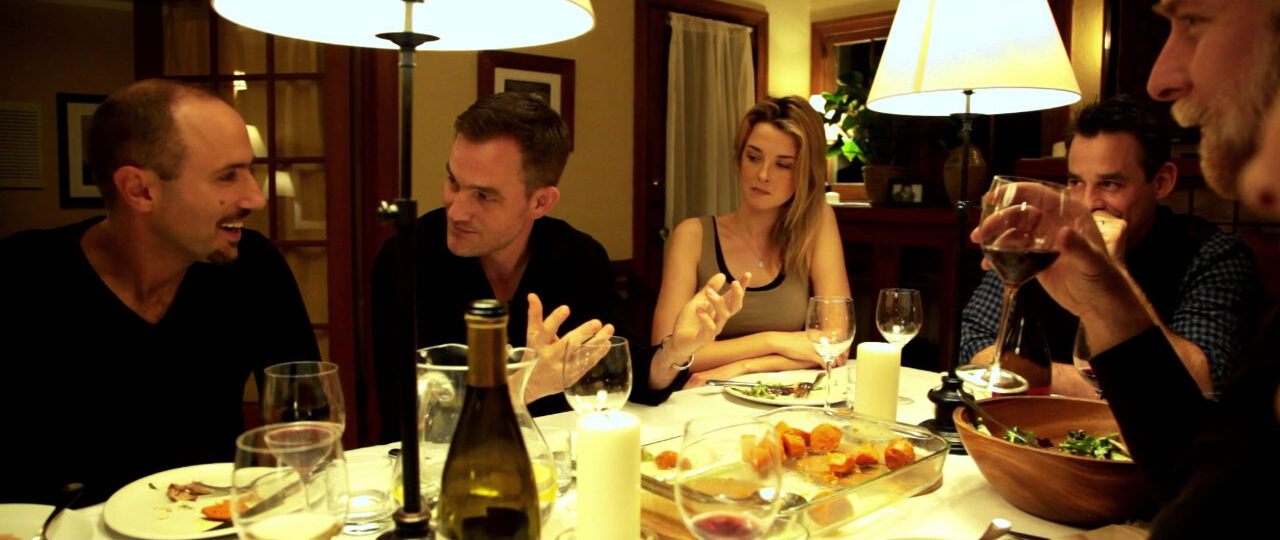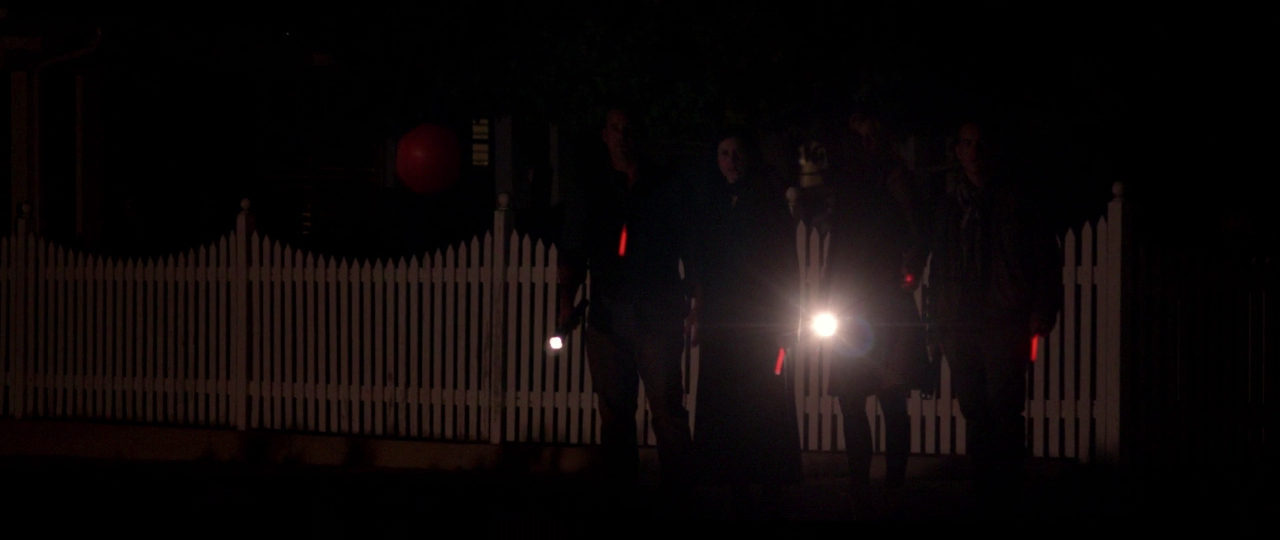

“There is another theory: that two states continue to exist, separate and decoherent from each other, each creating a new branch of reality.”
Coherence is noteworthy for several reasons. First, it was made for only $50k, which is like nothing compared to most modern film productions.1 Second, it features a tight, spatially contained premise that allows director James Ward Byrkit to mask the low budget. Third, the film follows in the footsteps of other low budget films that engage the mind just as much as the eye—such as Cube (1997), Primer (2004), and The Man from Earth (2007)—in using ideas rather than spectacle to engage the audience. In this case, we are playing with the concept of Schrödinger’s cat.
As a comet passes close to the earth, a group of eight friends are having a dinner party. They are composed of four couples, Emily (Emily Baldoni) and Kevin (Maury Sterling), Amir (Alex Manugian, who co-wrote the film) and Laurie (Lauren Maher), Mike (Nicholas Brendon) and Lee (Lorene Scafaria), and Hugh (Hugo Armstrong) and Beth (Elizabeth Gracen). There are some relational drama elements that are mostly there to create tension (notably, Kevin and Laurie dated previously), which are necessary to give the film a realistic feel but are not important to the overall concept of the film.
Almost immediately, strange things begin to happen that they brush off and attribute to the comet—cell phone screens crack, the power flickers, etc. Exploring the neighborhood, they discover that only one other house has power besides their own. Like Primer and its endless time-traveling loops, Coherence would be a good project for mapping and cross-referencing to track exactly what is happening. It is a movie where repeated viewings will unlock things that you didn’t catch the first time, because once one person leaves the premises, everything that happens after can be called into question.

Returning from investigating the other house, Hugh and Amir come back with a metal box and a story. The other house appears to be a copy of their own, and inside the box is numbered pictures of each of them. They try to write a note to the others to leave on their door, only to find that the people from the other house had already left the same note on their door. As separate realities branch out further and further, it becomes clear that entering the darkness between the houses spits the traveler out into a different reality than they had come from.
This calls into questions actions that have already taken place. At some points, time seems to be out of whack, with actions taking only a few moments and characters claiming to have been gone for forty-five. It’s very thrilling and tense, and takes some brainpower to keep track of things as we learn them. Midway through, there’s an interlude where Beth produces a book that allows the layman to grasp the paradox that is being explored. In a kind of meta-commentary on other brainy films info-dumping halfway through to explain what’s going on, the book tells us about Schrödinger’s cat but it doesn’t say anything about comets or really help the protagonists out at all, mostly serving only to increase their level of paranoia.

I don’t want to spoil the details of the plot; I would rather focus on the innovativeness and general creativity of the filmmakers involved. Byrkit used his own home for the set, and used actor’s who liked to improvise, giving them only brief character descriptions and major plot points. The director claims to have spent over a year mapping out the different realities that interact on and offscreen.
“For about a year, all I did was make charts and maps and drew diagrams of houses, arrows pointing where everyone was going, trying to keep track of different iterations. Months and months of tracking fractured realities, looking up what actual scientists believe about the nature of reality—Schrödinger’s cat and all that. It was research, but despite all the graphs and charts, I think our whole idea was that it has to be character-based. We want the logic of our internal rules to be sound, and we wanted it to be something people could watch 12 times and still discover a new layer.”
The improvising cast play off each other very well; the relationships are believable, and the average intelligence of the characters gives the unfolding horror some levity as characters react in various ways, some taking the events more seriously than others. Each day, Byrkit gave the actors notecards with points that their character had to convey while filming, but there was no set script,2 resulting in very organic dialogue and character reactions. Periodically, the film fades to black, which (I think) indicates that a “new” character has entered the premises, but I’m not entirely sure if that remains consistent throughout or if it is just there to mess with the audience.
To my eyes, the only thing that really detracted from the film was that the outside scenes could have been illuminated a bit better, as the characters just descend into a blur of darkness when they are not indoors. Other than that, I’m in awe at how impressive this film is when considering the small budget (which again, gets forgotten because of the smart premise). It just goes to show that creativity doesn’t necessarily need to be backed by truckloads of money to make something great.
If you like having your brain teased, and enjoy toying with confusing concepts, or, if you are interested in how to make a great film on a low budget, it is well worth watching.
1. A couple of reference points: Star Wars: The Rise of Skywalker (2019) cost $275M to produce; Ex Machina (2014) cost $15M.
2. Ironically, the film won several awards for Best Screenplay.
Sources:
Topel, Fred. “Coherence: Nicholas Brendon on Schrodinger’s Cat and Buffy”. Mandatory. 20 June 2014.
Tobias, Scott. “How James Ward Byrkit constructed Coherence”. The Dissolve. 26 June 2014.